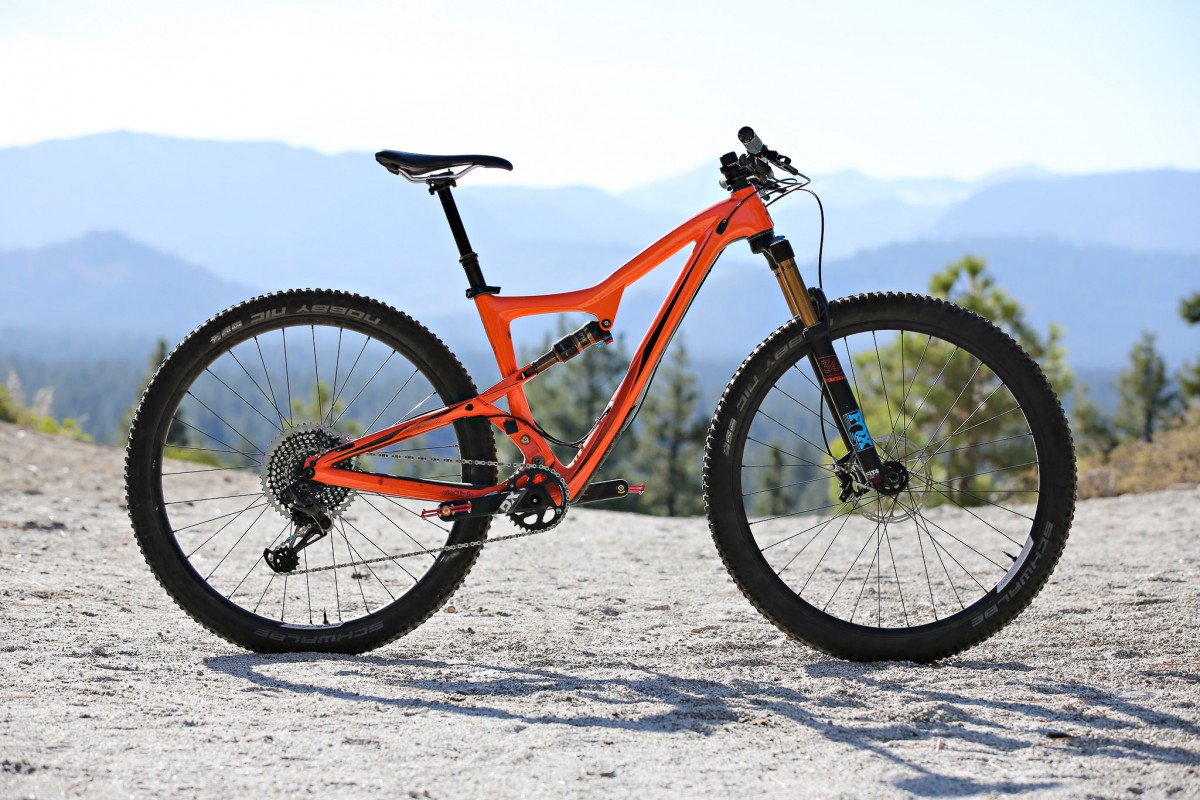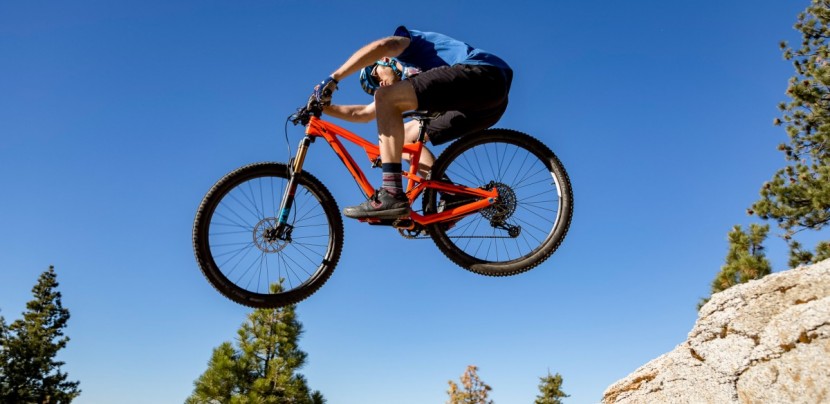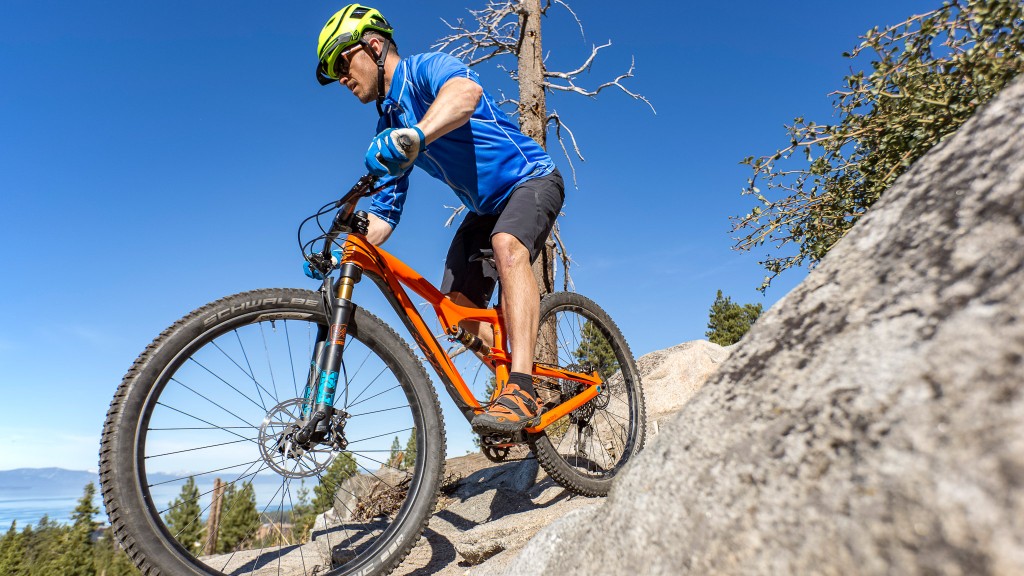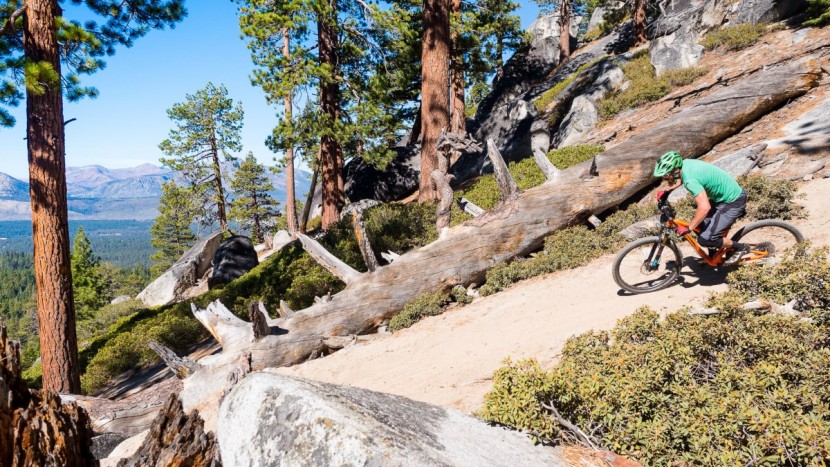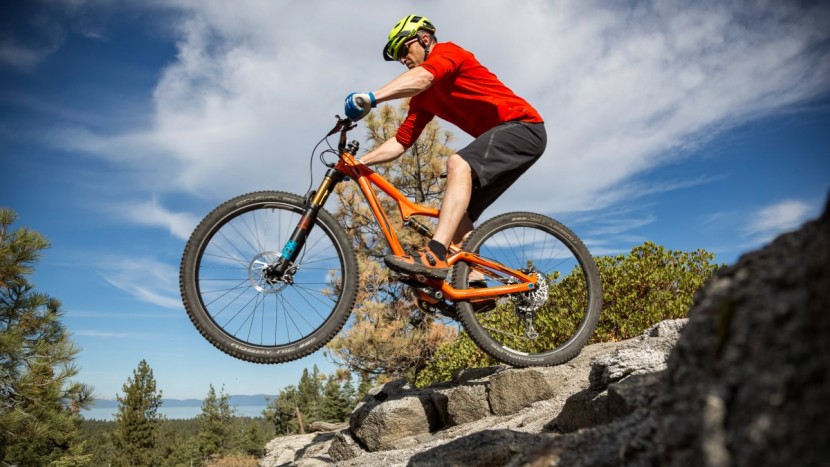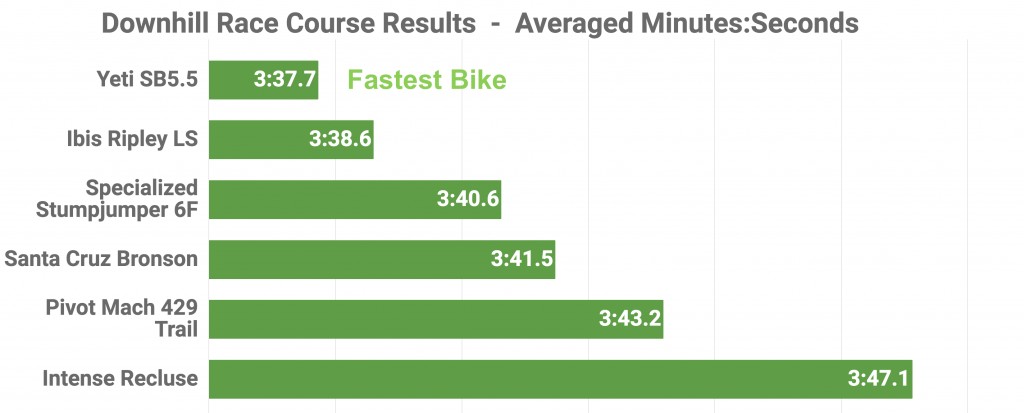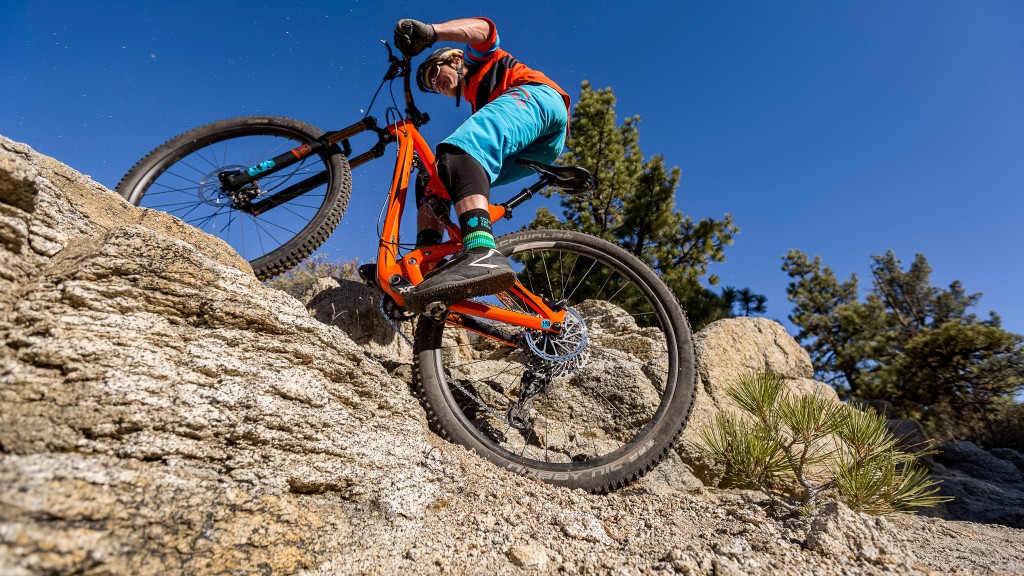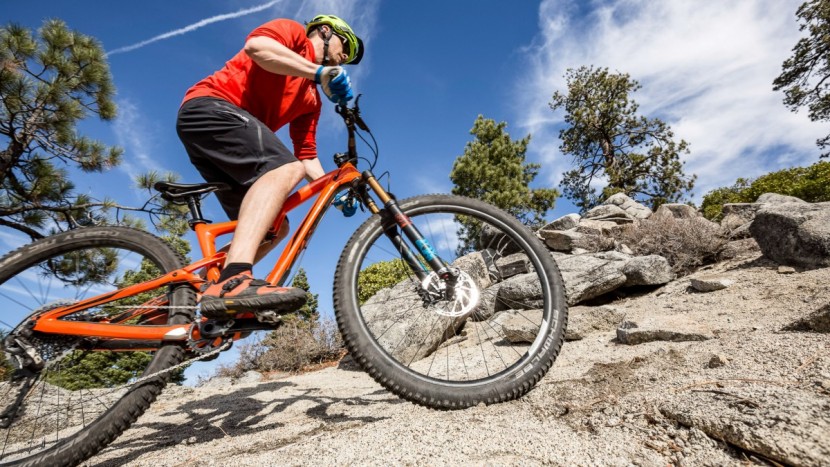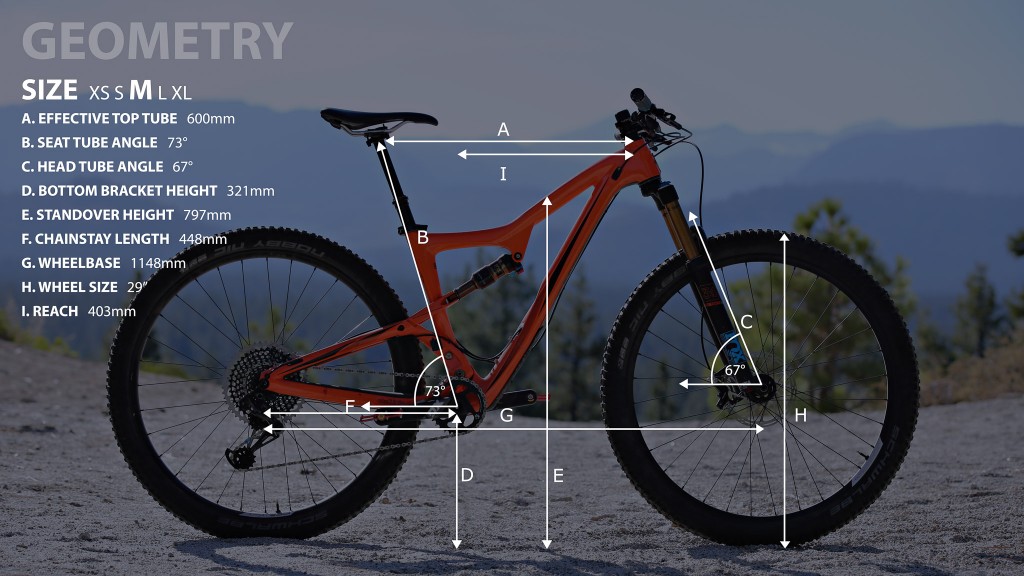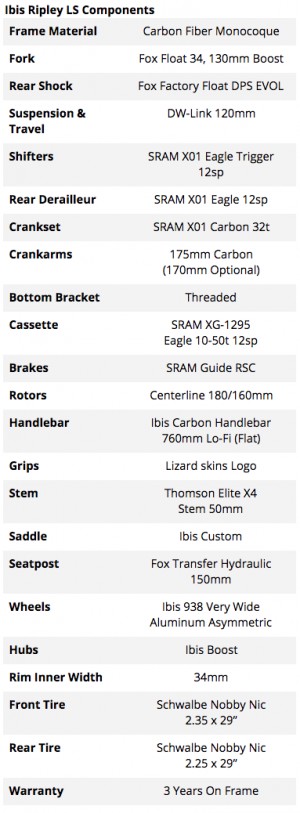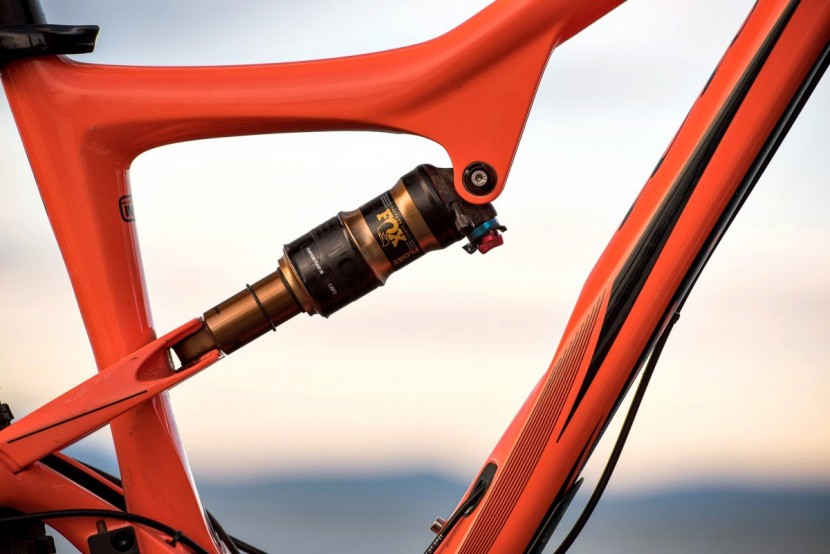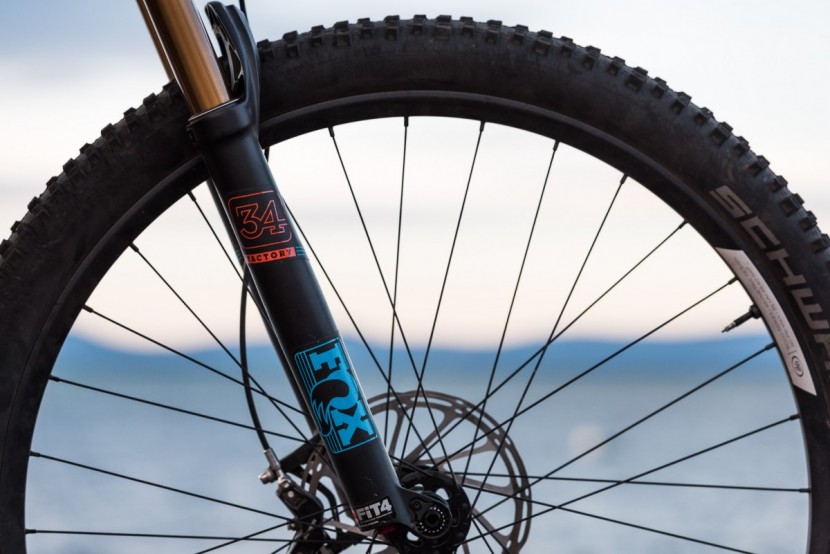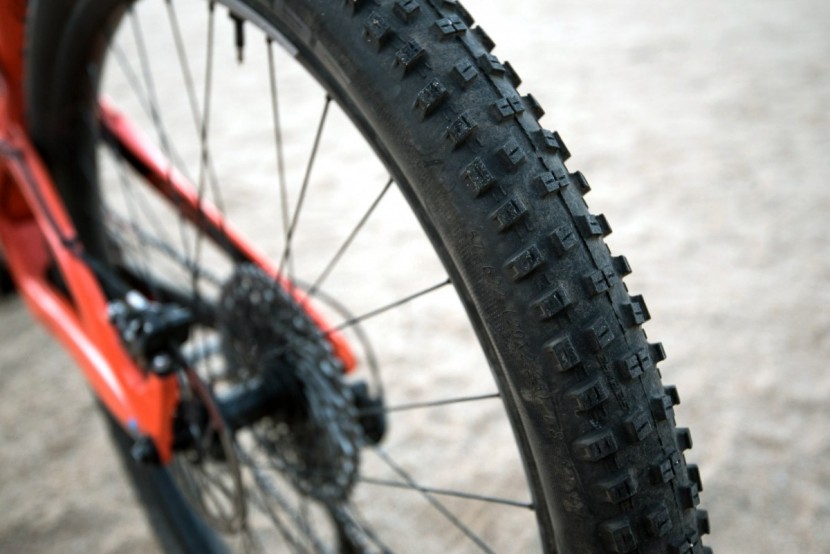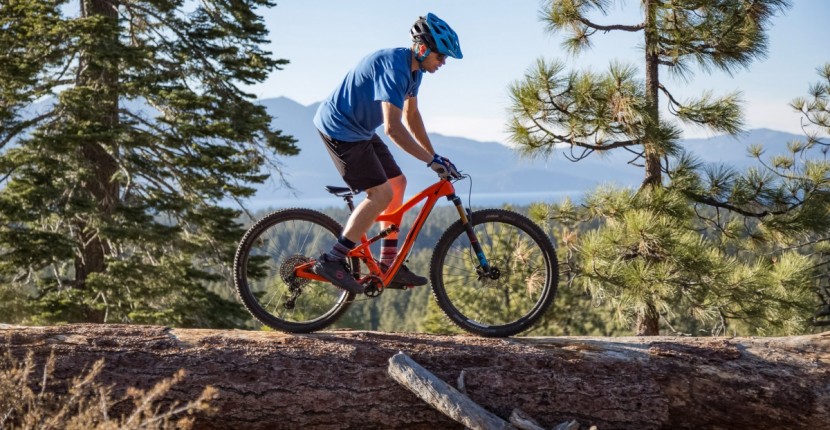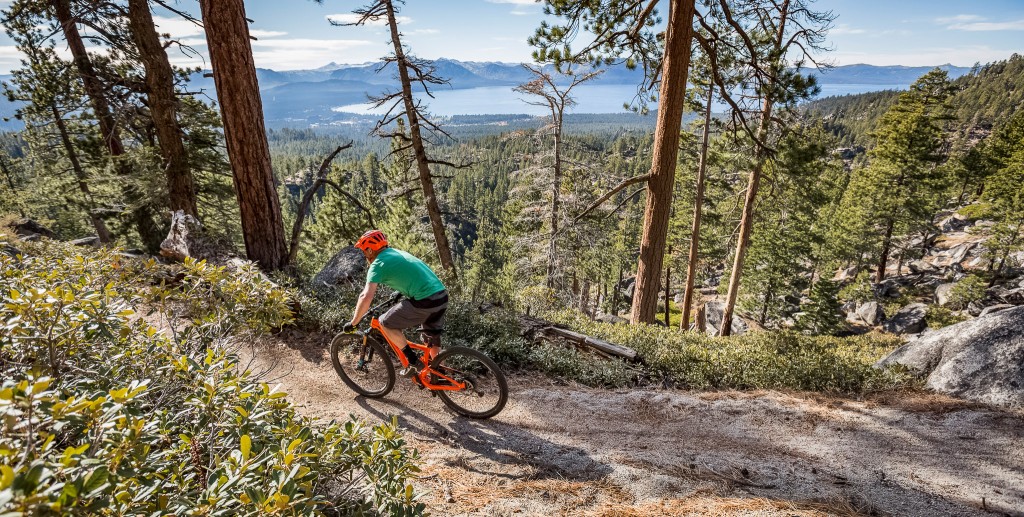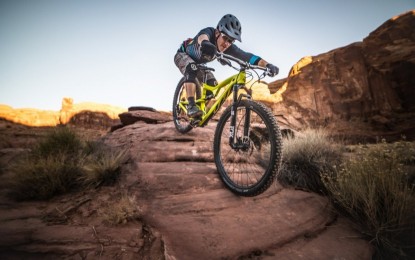The 2017 Ibis Ripley LS combines solid performance with a hyper-sporty trail feel to deliver tons of downhill fun. Supremely nimble, the Ripley demands side feature action. It's not a bad climber either. Uphill handling is pleasant and pedaling is efficient, until the going gets rocky. On technical climbs, the front wheel can deflect, and we clang pedals and cranks with maddening consistency. Aside from that, the Ripley rips. Taking just enough out of the hits to keep you comfortable and confident without dumbing down the ride, the Ripley LS's has an incredibly light and lively trail feel.
We recommend the 2017 Ripley for zippy rides on mellower trails through rolling singletrack and a few rock gardens, with the option of lapping bigger descents on occasion. It's not a rocky mountain town bike so much as it is a foothill rager.Ibis Ripley LS 2017 Review
Our Verdict
Our Analysis and Test Results
Six professional bike testers used a relentless testing protocol two years in the making to put the Ibis through its paces against the 2017 Yeti SB5.5c, 2017 Specialized Stumpjumper 6Fattie, 2017 Santa Cruz Bronson, 2017 Pivot Mach 429 Trail, and 2017 Intense Recluse.
Fun Factor
The Ripley's deft handling, active suspension, and sporty feel demand a good time. Many of the other 29ers we tested are mostly fun because they're fast. (Also because they're mountain bikes.) The impish Ibis Ripley LS is something else. It practically dances down the trail, hunting downside hops and mini-drops, popping off the fork and floating in the air, adding automatic style points to your ride. The bike demands to be pushed out of its comfort zone, but, with only 120mm of suspension, some of the landings are jarring, and rougher lines can equal rough rides.
That's the downhill. The uphills are an anoxic good time when there aren't many rocks. It's a strange variety of amusing to beatbox along with the pedal strikes when there are. Overall, the Ibis tied the Stumpjumper 6Fattie at a 9 out of 10 for inspiring pure childish joy on the regs.
Downhill
With solid geometry, killer traction and a low slung chassis, the Ibis is quietly confidence inspiring. It doesn't grind down the rough edges and open up options like bigger hitting bikes with more travel, but it will handle your line. We love its smooth but sporty response to trail chunder and affinity for speed. The faster you go, the more confident it gets, assuming you like the challenge of picking a line and the lively feel of the trail beneath you. The build's wide rims and tacky Nobby Nics deserve a shout out here. The 2.35"/2.25" front and rear tires mounted on 34mm rims feel fantastic on the Ibis.
The steering is nimble, playful and light. Its momentum is the only characteristic that consistently reminds us that it's a 29er. In a devil's trade for top-notch maneuvering, the Ibis is less stable through chunky rock lines than bigger suspension beasts, with one tester calling it skittish. It rolls fast and takes big hits hard, requiring quick responses. There's no way around it on a 120mm travel bike. But the bike rarely feels out of control, and its excellent small bump compliance keeps you feeling like the true captain of your cockpit without diminishing natural trail features.
The Ripley allows testers to maintain optimal body positioning on the descents, corners, and flats. It's easy to find the balance point, but not automatic. The Ibis requires a more conscious shift into the backseat in preparation for big features than some bikes. While the cockpit is more upright than some of the bikes with longer reaches, its low bottom bracket, low standover, and the Lo-Fi carbon bars we ran during testing kept us feeling low and in control.
As such, it's an exceptional cornering bike on the descents. It's aggressive, engages well and is ridiculously fast. The 2.35-inch Schwalbe Nobby Nic is dialed in the front with the same tire in a 2.25-inch tracking behind. They let the Ripley lay right over to those Nobby side knobs to rail around. The tires are hard-pressed to break loose even when the trails are sandy enough to toss most of the other bikes around.
It's not the best on the sharpest of corners, but it's doable to whip around or slow down to steer through. On swooping downhill turns, all we had to do was drop the seat, get back and swing around. It doesn't want to stand up on the longer, sweeping corners like many gyroscopic 29ers do. The low bottom bracket does make for the occasional scraped pedal, but it's rare. At slower speeds, it's, well, slower. Its bigger wheels require more input. Still, for the most part, it handles like a 27.5-inch bike with the power and rollover capabilities of a 29er. The other 29ers we've tested don't match this magic.
Our heaviest, most aggressive rider loved the Ripley LS, but he bottomed the rear shock out on nearly every run, and one of those hits was harsh. Our other three downhill testers felt the limits of the shorter travel but mostly played inside the shock's boundaries. The extra volume in the Fox Factory Float DPS EVOL rear shock had us running high pressures. Once it was holding up on the rougher trail sections, we started really having fun, but those high pressures stiffened up the response early in the stroke as well.
The situation seemed to call for a volume spacer to ramp up the suspension curve on the bigger hits. So, after finishing our standard as is testing, we installed one, a large, and switched from a Lo-Fi to a Hi-Fi handlebar for kicks. Then we sent our lead tester back out on the trail. He returned with tales of wonder: The spacer let him run reasonable pressures without bottoming out and increased the small bump compliance. The Hi-Fi handlebar felt more trail appropriate. Simple fixes.
While the bike is harsh and can bounce you around on the bigger hits, small bump compliance is tops, arising from a partnership between the suspension and the tires mounted on 34mm rims. Those wide tires start compressing at the slightest hint of a hit, and the suspension jumps in just as the sidewall is overpowered. You never feel the suspension's initial engagement.
The 130mm Fox Float 34 fork works well, but we'd like a stiffer one, perhaps a 36. We bottom it out on occasion but like its feel. In fact, we like the feel of the suspension overall, and it maintains plenty of traction. The tires are grounded without feeling lethargic.
It held up throughout downhill testing, earning the second highest rating with an 8 of 10. The enduro ready Yeti SB5.5 earned a 9 for out-pacing the Ripley LS and taking on the big hits on in a big way. Both bikes rolled fast, but the Ibis shudders when landing large drops, persuading us to dial back our gravity borne bashing. The Ripley LS rolls over more mundane obstacles with panache. The Pivot Mach 429 Trail takes the opposite approach, rattling us free of confidence on the descents early and often but standing up to bigger drops just fine. It's never that fun. In contrast, if you can pick a line and pay attention, the Ibis, it's a blast.
The Ripley rages. Despite getting knocked around more than some of the bigger bikes, the bike's excellent geometry, great handling and sticky rubber gave us the confidence to let 'er, well, rip. The Ibis's acceleration is snappy. Not just easy to get up to speed, the Ripley LS maintains it through choppy sections and big hits. It's speed is evidenced by its 8.5-second lead, on average, over the slowest bike in the test on our downhill race course. Only 0.9 seconds faster on average, the Yeti just holds onto a downhill speed advantage.
Climbing
The Ripley LS is a fair weather climber. On smooth, flowing trails with the occasional rocky stretch, it hikes right up the hill. But we also tested the bike's technical climbing limits, and we found them. When the going gets rough, the pedals start throwing sparks, the back tire can slip, and the front tire can deflect when not perfectly lined up to impact rocks. It's not awesome.
Dial the trail difficulty back, and we'd hop on this bike for an uphill any day. Efficient and light, the Ripley LS is a good climber, whether the suspension is locked out, in trail mode or fully open. You can feel the pedal power transfer thanks to a solid bottom bracket and lower linkage combination. It's one of the better pedaling designs we've tested, relying very little on the shock and feeling more akin to a hardtail than a 120mm travel trail bike. It also maintains the seat tube angle nicely, even when winching up the steepest rock slab rollovers.
Uphill handling is responsive, it goes where you point it and never wanders. It's enjoyable on smooth uphill climbs where you don't have to be as precise with your weight to combat the bike's harsh reaction to adversity. Here the Ripley LS does a lot of the work for you, and the tires amp up the traction substantially. The Ripley LS also accelerates quickly, making it a cinch to pick up speed after topping out technical stretches. Those Schwalbe Nobby Nic tires put so much rubber on the ground that you can crank through the corners without worrying about skidding out. The bike holds momentum well but has a plateau. As such, it doesn't feel like a race rocket.
The suspension is smooth and planted without feeling sluggish. The bigger hits, however, can bounce the Ibis offline. It recovers quickly, but we ended up manualing over the rock steps to avoid the need. It's easy to move around, but if you miss your line and hit a rock, you're gonna get bucked. The front tire often flops or deflects on square stairs and you've got to work hard to recover. Add in the 175mm cranks and low bottom bracket, and the Ibis is more of a foothill climber than a rocky mountaintop summiter.
While the medium size fits our testers, Ibis bikes tend towards the small side, recommending a medium for 5'4" to 5'9" riders. Though the fit is great for descents, the top tube feels a little short when cranking in the saddle. The upright cockpit also tends to bias your weight forward on the climb, setting you up for a rear tire slip/spin.
You've got to earn those downhill grins. The Ripley LS is the second slowest climber in the test. While the Ibis climbs nicely, it doesn't climb that quickly. It felt like the slowest of the 29ers on our technical climbing benchmarking course. The two others in the test, the Yeti and the Pivot beat it by 2.1 and 2 seconds, respectively.
With a 7.9-second advantage over the Intense, the Ibis steps up to a third-place finish on the nearly featureless climbing course, The Crank. Its efficient pedaling fares better here, but it still comes in 3 seconds behind the Santa Cruz Bronson and 2.7 behind the Pivot. On this track, we're guessing those wide and tacky tires slowed the Ripley LS down somewhat, though not as much as the Yeti and Specialized.
Thus, the Ripley LS's uphill score ties with the burly Yeti's combination of tenacious technical climbing but heavy feel on mellower trails. They both earned a 7 of 10. The quick and capable climbing Mach 429 and easily maneuvered Bronson top the list with a 9 and 8, respectively.
Frame Design and Measurement
We love this frame. The angles are perfect. Ibis did a great job with the geometry. The only issue is the bottom bracket, which is only 321mm off the ground according to our measurements. That's 8mm beneath the next lowest Stumpjumper 6Fattie and 27mm closer to the ground than the tallest bike, the Yeti SB5.5. This is a tradeoff for the nice and low standover height (measured at 797mm). It let the bike feel like a 27.5" bike and corner without a hint of gyroscopic effect but made pedal strikes a major problem when climbing.
The Ibis fit us all well, but even this LS “long and slack” version is on the smaller side of the bikes in our test. It feels a bit short in the top tube for a few of our testers on the climbs, giving the feeling of being too far forward over the bike when sitting down and powering through. It works, though. Once you're rolling, it feels comfy, and certainly never cramped. It also keeps the Ripley LS from having the Dad's ride, scaled up trail bike feel of the Yeti and Pivot. The Ripley LS feels like its own creation.
Ibis Sizing Guide: M (5'4" — 5'9"), L (5'9" — 6'2"), XL (6' — 6'6")
Build
We love the wheelset and tire choice but are underwhelmed by the fork, saddle, handlebar, and brakes. The performance of the rear shock was our biggest problem with the bike.
Fork and Rear Shock — The 130mm boosted Fox Float 34 fork felt good, but we gravitate towards the RockShox Pike and would like to see an extra 10mm to improve the feel descending and to lift the bottom bracket up a bit.
The rear shock, a Fox Factory Float DPS was easily overwhelmed by our testers, bottoming out regularly even with sky-high pressures. The small bump compliance was good but suffered at the higher shock pressures. Adding a large volume spacer after formal testing allowed us to put in less pressure and improve the feel on small hits while ramping the compression up more quickly for the big ones.
Wheels and Tires — The Ibis 938 Very Wide Aluminum Asymmetric rims and Ibis Boost hubs make for a great wheelset and the whole team wanted to give Ibis huge high fives on the tire choice until we started heading up technical lines. Between the Schwalbe Nobby Nicks, 2.35" front and 2.25" rear, and the 34mm rims, we have traction for days on the downhills and corners, even the dry ones. But when it comes to climbing stairs, things get a little more complex.
Unless perfectly lined up, the front tire often deflects to the side when ramming a rock we'd like it to roll over, making mistakes costly. It didn't feel like a geometry issue, and the Ibis has one of the steepest head tube angles in the test, in line with the Pivot Mach 429 Trail. We think it's due to the rounded sidewall of the tire pushing the tread away from the rock. The back tire could also slip on the rock stairs, possibly a product of the frame setting us up with our weight pretty far forward.
Groupset — The SRAM Guide RSC brakes with 180/160mm rotors are premium. We could have used a 180mm on the rear wheel though. As for the drivetrain, we appreciated the threaded bottom bracket and the eagle worked seamlessly. We don't need that big cog very often, but we love it when we do. However, we busted three chains on this drive train during testing, on the Specialized, Pivot and Yeti. It's enough to make us nervous about owning one. The crank arms are similarly excellent, except for their length. At 175mm they worked against us due to that low bottom bracket. We'd shorten them up or do something to jack up the bike.
Handlebars, Seat, and Seatpost — We rode the 760mm Lo-Fi handlebars throughout benchmarking tests. We aren't huge fans. They feel surprisingly good on the descents and corners, helping us tuck in and stay low once we got past their odd look and settled into performance. On the technical climbs, however, they felt too low, not giving the testers much leverage when pulling the front tire up and over the stairs. They were also about 20mm too narrow. They didn't ruin our experience, though. After testing, we switched them out for the Hi-Fi version for a couple of rides, and they felt much more trail bike appropriate.
The fat double lock Lizard Skins Logo grips are also annoying. The outer lock hits us right in the meat of our palms, making feels like we're trying to steer the bike open handed. The uncomfortable Ibis saddle was an unnecessary cruelty. The 150mm Fox Transfer Hydraulic seatpost worked fine, better than the reverb, and we liked the lever a lot.
Value
The Ripley LS's $6,599 price tag buys you a spec that could have been better. The excellent componentry on the 2017 Santa Cruz Bronson is far preferable for the exact same price. We like the fork, rear shock, saddle, seatpost, handlebar, and grips on the Santa Cruz much better. Over, the Ripley LS value is okay, but Santa Cruz does value better here.
Conclusion
Too fun to deny, the Ibis Ripley LS is the most joyful ride in the test. The bike is perfect for rolling foothill singletrack. It can also take on bigger lines in the desert or high mountains when asked. It takes enough out of the big hits to keep you confident without dumbing down the ride, but it's work. So is getting it uphill through rocks. You'll make it. All in all, the tribulations are worth the triumphs for riders not tackling gnarly terrain regularly.


